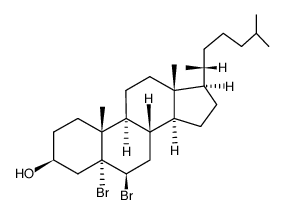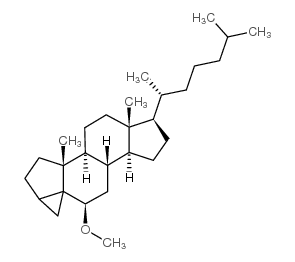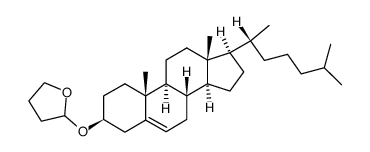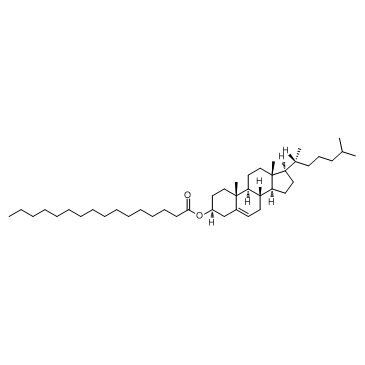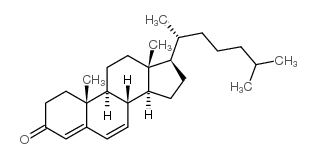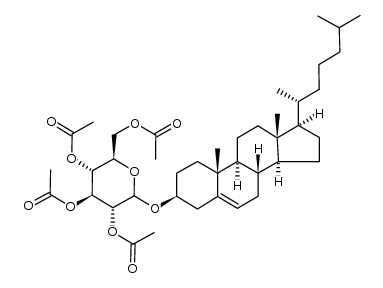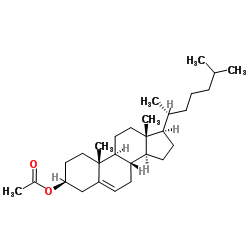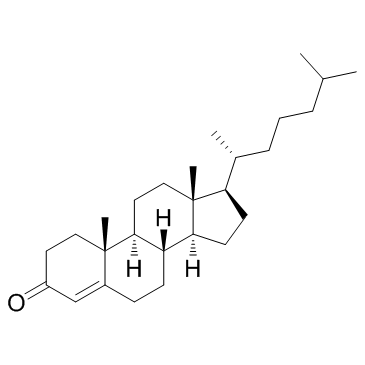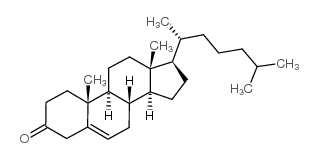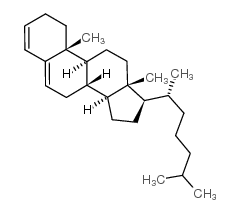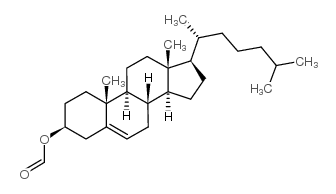57-88-5
| Name | cholesterol |
|---|---|
| Synonyms |
20-Dihydro-11-deoxycortisol
cholesterin D5-Cholesten-3b-ol 20-Dihydro Cortexolone 3b-Hydroxy-5-cholestene 5:6-Cholesten-3b-ol (3β)-Cholest-5-en-3-ol δ5-Cholesten-3β-ol cholest-5-en-3-ol, (3b)- Cholest-5-en-3-ol (3β)- Cholest-5-en-3b-ol EINECS 200-353-2 5-Cholesten-3B-ol 5-Cholesten-3β-ol Cholesterol (3b)-cholest-5-en-3-ol 3β-Hydroxycholest-5-ene 5:6-Cholesten-3β-ol (3S,8S,9S,10R,13R,14S,17R)-10,13-Dimethyl-17-[(2R)-6-methyl-2-heptanyl]-2,3,4,7,8,9,10,11,12,13,14,15,16,17-tetradecahydro-1H-cyclopenta[a]phenanthren-3-ol 7α-Cholesterol MFCD00003646 Cholest-5-en-3-ol, (3β)- (-)-Cholesterol Cholest-5-en-3β-ol |
| Description | Cholesterol is the major sterol in mammals, and its importance in fundamental cellular processes is becoming more appreciated. IC50 value:Target:In vitro: GT1-7 hypothalamic cells subjected to cholesterol depletion in vitro produced 20-31% reductions in cellular cholesterol content, similar to the decrease in cholesterol synthesis observed in diabetes [1].In vivo: |
|---|---|
| Related Catalog | |
| Target |
Human Endogenous Metabolite |
| References |
| Density | 1.0±0.1 g/cm3 |
|---|---|
| Boiling Point | 360 ºC |
| Melting Point | 148-150 °C |
| Molecular Formula | C27H46O |
| Molecular Weight | 386.654 |
| Flash Point | 250 ºC |
| Exact Mass | 386.354858 |
| PSA | 20.23000 |
| LogP | 9.85 |
| Vapour Pressure | 0.0±2.7 mmHg at 25°C |
| Index of Refraction | 1.525 |
| Water Solubility | negligible |
CHEMICAL IDENTIFICATION
HEALTH HAZARD DATAACUTE TOXICITY DATA
MUTATION DATA
|
| Symbol |


GHS06, GHS08 |
|---|---|
| Signal Word | Danger |
| Hazard Statements | H302-H315-H319-H331-H336-H351-H361d-H372 |
| Precautionary Statements | P201-P261-P304 + P340 + P312-P305 + P351 + P338-P308 + P313-P403 + P233 |
| Personal Protective Equipment | Eyeshields;Faceshields;full-face respirator (US);Gloves;multi-purpose combination respirator cartridge (US) |
| Hazard Codes | Xn |
| Risk Phrases | R10 |
| Safety Phrases | S24/25-S22-S36/37 |
| RIDADR | UN 1170 3/PG 3 |
| WGK Germany | 1 |
| RTECS | FZ8400000 |
| Hazard Class | 3.0 |
| HS Code | 2906131000 |
| Precursor 10 | |
|---|---|
| DownStream 10 | |
| HS Code | 2906131000 |
|---|
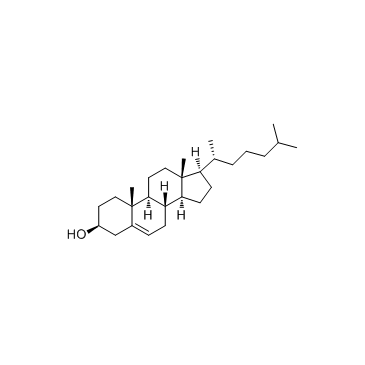
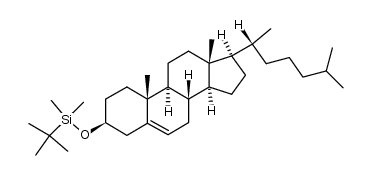
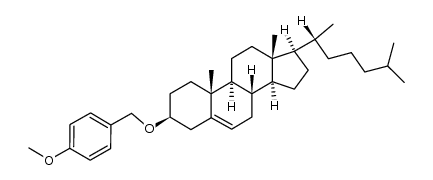

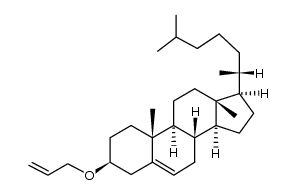
![3β-[(Tetrahydro-2H-pyran)-2-yloxy]cholest-5-ene structure](https://image.chemsrc.com/caspic/185/6252-45-5.png)
![17-(1,5-dimethyl-hexyl)-10,13-dimethyl-2,3,4,7,8,9,10,11,12,13,14,15,16,17-tetradecahydro-1Hcyclopenta[a]phenanthren-3-yl diphenyl phosphate structure](https://image.chemsrc.com/caspic/151/24352-63-4.png)
![(2,2,7,7-Tetramethyltetrahydro-3aH-bis[1,3]dioxolo[4,5-b:4',5'-d]pyran-5-yl)methanol structure](https://image.chemsrc.com/caspic/222/4064-06-6.png)
